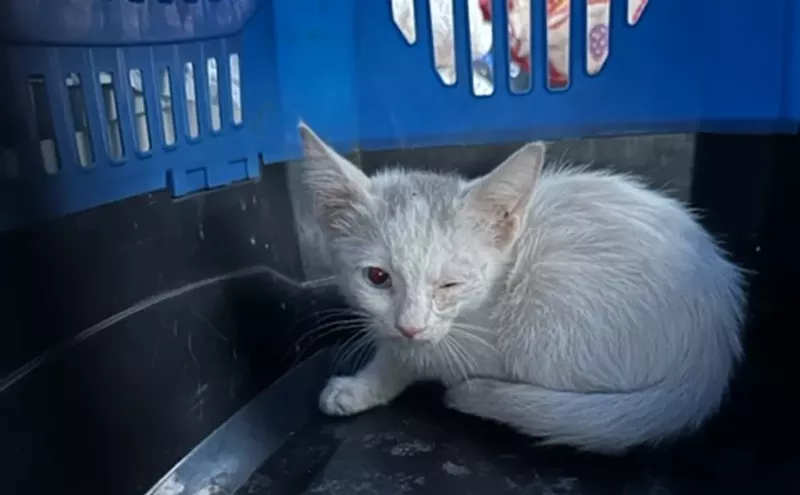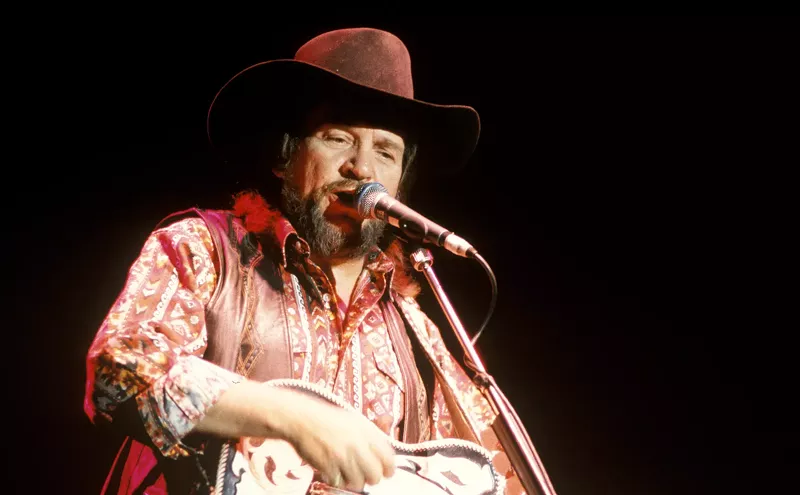She looked small and frail and bewildered. Her fashionably bobbed hair, like so many women wore in 1931, needed washing. Her dress and hose were soiled. Her gaunt cheeks showed her hunger. Her enormous eyes didn't seem to focus. She cradled her left hand, a bullet still embedded, already gangrenous. Around her shoulders was the comforting arm of a man who looked too ordinary, too old to be this young beauty's husband.
Newspaper photographers captured all her confusion and vulnerability as she was hustled into custody. The news wires spread the pictures across the country. One front page after another featured her the next day so everyone could finally get a look at the nation's most wanted fugitive, the woman wanted in Arizona as a murderer and a butcher: Winnie Ruth Judd.
She was already labeled "The Trunk Murderess."
Not since Lizzie Borden had a single name conjured up such horror. Or such disbelief. Two young Phoenix women shot to death in a love triangle over a prominent married man.
One of the bodies cut into pieces.
Both bodies stuffed into trunks, shipped out on the 10 p.m. train to Los Angeles.
Discovered by an alert baggage man noticing flies and leaking blood.
Five days on the lam.
Capture!
Arizona's biggest news story fascinated the world, making Winnie Ruth a household name in the weary Depression days of the early Thirties. Reporters flocked to Phoenix to record every delicious detail, to raise every suspicion that there was more than met the eye in this notorious case.
The story had everything: sex, murder, perversion, society, conspiracy, mystery. The strait-laced readers of the day were as horrified over her illicit love affair with a pillar of society as by the dismembered body. They were as shocked at the whispers about lesbianism and syphilis as by clues she'd had high-powered accomplices.
The political fallout hit Phoenix even before she was brought back from Los Angeles to stand trial. Most sensational was discovery of a "diary" kept by one of the victims. The wire services reported news of the diary "rocked Phoenix official and social circles with threatened exposures of the `playboys' who helped [the girls] `enjoy life.'" A local attorney kept the diary locked in his office because its contents "would wreck several prominent homes, and efforts were being made to keep names in the diary from being drawn into the court records."
An astonishing crowd of 20,000 met the caravan of Packards that brought Winnie Ruth Judd back to Phoenix. By then, everyone knew her boyfriend was a wealthy local lumberman named Jack Halloran, who had a wife and three kids. Everyone knew this daughter of a preacher had "confessed" in long stories carried by William Randolph Hearst's L.A. Evening News. Everyone knew she claimed she killed in self-defense during a fierce struggle that left her wounded. Everyone still waited for an explanation of the butchery.
Halloran wasn't in the crowd. He was at a Community Chest meeting at the Luhrs Hotel, bragging to other civic bigwigs that his group would exceed its quota of public donations for 1931.
A DAILY FIGHT for the few available seats in the small courtroom.
Winnie Ruth sitting through it all mute, constantly twisting a handkerchief around her wounded hand.
Halloran sworn in. Never testified.
Defended on the plea of insanity.
Prosecuted for cold-blooded, premeditated murder.
Guilty. Hang!
Appeal to the Board of Pardons and Paroles.
No!
Saved from the gallows by a last-minute judgment: insane. Off to the asylum.
Seven escapes--the last giving her stolen freedom for six-and-a-half years.
Her infamy remained so widespread that even three decades after her trial, papers on both coasts would blare the headline "Winnie Escapes Again!" They didn't have to say which Winnie. America had only one. And so many thought they knew the horrible things she had done. Yet, so many still sympathized with the view of a minister who had argued: "If `velvet tigress,' `blonde butcher' and `trunk murderess' in glaring headlines constantly would not make a populace thirst for the blood of the person thus maligned, then nothing would . . . . If the death penalty is ever justified, it can [be] only in a case where there is no doubt. But here is a case shrouded in mystery . . . ."
To believe her plaintive cries and the shrieks of her "sob sisters," you'd have to believe Phoenix was a small and vicious town that literally hung the entire mess around the neck of this impoverished 26-year-old medical secretary. You'd have to believe powerful forces could orchestrate a cover-up. You'd have to believe evidence was destroyed or ignored. You'd have to believe some people in Phoenix had something very important to hide behind her skirts.
There were plenty who believed that then, and a new look at the case shows there are ample reasons to believe that now.
To this day, the media have portrayed this as an open-and-shut case. News stories still echo the words of her prosecutor: "She is guilty of the most cold-blooded murder I ever encountered. If ever anyone deserved to be hanged, it is she."
A far different picture emerges after days of listening to her talk in the most thorough interview she's ever given, after months of digging through records falling apart from age, after discoveries that have remained secrets for nearly six decades.
Probing the bizarre events of her case reveals:
* Virtually no one, including the twelve men who sentenced her to hang, believed she'd dismembered a body--the crucial point that catapulted this homicide into one of the nation's enduring crime legends.
* Jurors admitted that they gave her the death penalty to make her talk, agreeing that once she fingered her accomplices, they'd get her sentence reduced.
* The first jury to hear her side of the story--a county grand jury called ten months after she was convicted of premeditated murder and sentenced to hang--believed her story of self-defense and asked for mercy.
* A total of thirty legislators pleaded for clemency, saying there was sufficient "reasonable doubt" about her guilt.
* Jack Halloran was indicted as an "accessory to murder," but walked away in a legal Catch 22 that is unmatched: The judge ruled the evidence proved she'd killed in self-defense and "therefore there can be no accessory because there was no crime." Yet she remained on death row and was saved from the gallows only by being declared insane.
* She never was allowed a sanity hearing that could have freed her as early as the mid-Fifties.
* She was instructed in her pardon in 1971--forty years after the killings--never to tell her story, "or any part thereof."
WHEN ARIZONA FINALLY let her go, she was plump and wrinkled and not gray only because of the henna she still used. She'd paid for the sin of her youth a total of 38 years, 11 months and 22 days. No one in Arizona and few in the nation had ever paid more. By then, there wasn't much need to punish her more. Whatever secrets she held came from a different era. If there were people to protect then, they were old themselves now, if not already dead. She could no longer ruin careers, marriages, social standing. Whatever dirty linen had stayed stashed away with her for so long was no longer important. Arizona's capital was now a thriving city with a new crop of power brokers, not a small town where everyone knew everyone and the politically influential could buy anything.
Even the powerful Phoenix dailies that had long railed about this branded woman editorialized that "enough is enough." It was justice to give freedom to this old woman in her last years.
Few realized that was the only justice Winnie Ruth Judd ever got from Arizona.
She's 85 years old today, living under an assumed name with her ancient dog, Skeeter, in northern California. For the past twenty years, she's refused to be interviewed. It's taken three years of requests before she finally agrees to talk to New Times. She insists that the reporter stay at her two-bedroom apartment. She talks incessantly about what she wants you to know, with a memory so precise she recalls what she ate during her third escape. She'd rather forget what she calls "my tragedy." She tries begging off with "I'm old. My memory isn't so good." She claims that she couldn't survive telling again about the deaths of her two friends during the bedtime hours of that












